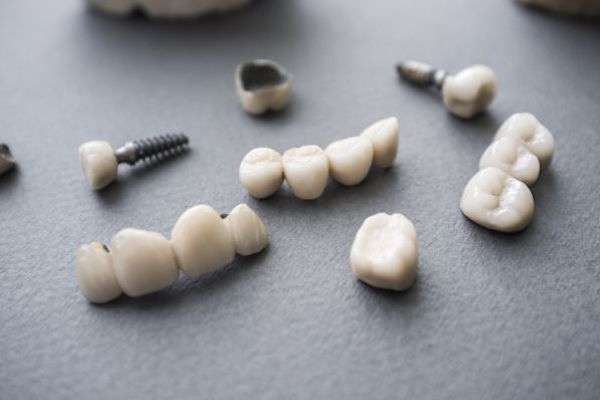 A patient may invest in dental implants for a variety of different reasons, many of which focus on positively changing personal image and improving overall oral health. Implants are often applied when patients are missing one or more teeth and are not interested (or have had no success with) dentures or dental bridges. To understand if this type of dental work is the right course of action, a patient must first know about the types of implants and the issues they address.
A patient may invest in dental implants for a variety of different reasons, many of which focus on positively changing personal image and improving overall oral health. Implants are often applied when patients are missing one or more teeth and are not interested (or have had no success with) dentures or dental bridges. To understand if this type of dental work is the right course of action, a patient must first know about the types of implants and the issues they address.
Implant options
On a basic level, a dental implant is a metal post that is screwed into the patient’s jawbone. Once secured, an artificial tooth, or crown, that matches the patient’s natural tooth color is attached to the post. The end result is a full smile and healthy, sturdy bite.
Dental implants can be broken into several categories, and a dentist may suggest one over the others because of specific patient needs. First, a dentist must determine if the patient has a strong enough jawbone for an implant. After that is decided, a patient may receive one of three different types of implants.
Endosteal versus subperiosteal
All implants can be divided into two major types: endosteal and subperiosteal. Endosteal implants are placed directly in the jawbone. These are often used with patients who have strong, healthy jawbones that are not at risk of breaking during the procedure or after the implants are placed. Endosteal placements are more common than subperiosteal.
Subperiosteal implants do not go into the jawbone but rest above it within the gums. Patients who do not have robust jawbones may undergo bone restoration techniques to regrow and fortify the bone to make it a candidate for endosteal implants. However, patients who do not wish to receive this treatment can opt for subperiosteal implants.
Single implants
Single dental implants are used if a patient is missing just one tooth. One post can be set into the jawbone where the tooth is missing, essentially replacing the lost root. The jawbone must then be given ample time to heal around the post, a period that can last several months. After it is fully healed, the crown is secured to the post via a third piece called an abutment.
Implant-supported bridges
Some patients are missing consecutive teeth in a row. In this case, dental implants can be placed in the location of the roots of the two teeth on each end of the row. The crowns attached to these implants support the crowns in between, creating an effective “bridge.” This removes the need for an implant under each artificial tooth.
Implant-retained dentures
The third option is for patients missing most teeth. Several implants are secured in the jawbone and attached to an entire denture that sits on top of the gums. Instead of having dentures that must regularly be removed, these dentures are permanently fixed in place.
Conclusion
Some dental implants work better for certain patients than others. See a dentist to get an assessment of your teeth and to discover what implant may work well for you.
Request an appointment or call Rafael E. Cordero, DDS PA at 561-763-9221 for an appointment in our Palm Beach Gardens office.
Recent Posts
Preparing for dental implant recovery is just as important as getting ready for the dental implants themselves. A good recovery sets the stage for successful implants that can last the rest of your life, with few additional changes or fixes. Here is what to expect after a dental implant procedure so you can adjust your…
It is common for people to be self-conscious about their smile, and many do not realize just how big of an impact that expert implant dentistry can have. Implants provide functional and aesthetic benefits that other restorations cannot achieve. The implant process is more in-depth than options like dentures, so the overall outcome is also…
Dental implants are permanent options for replacing missing teeth and repairing one's smile. Instead of contending with the annoying glue of dentures and the risk of them slipping out while talking, patients can enjoy dental devices that function like natural teeth by opting for dental implants. To determine if these are the right choices for…


